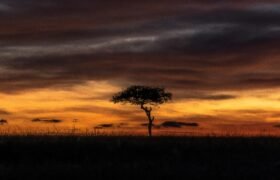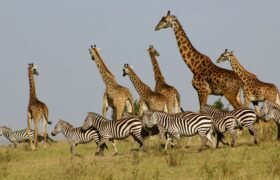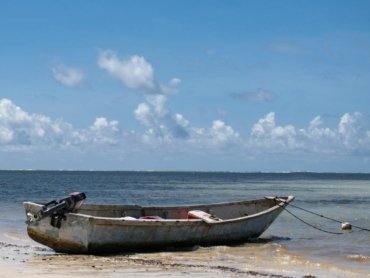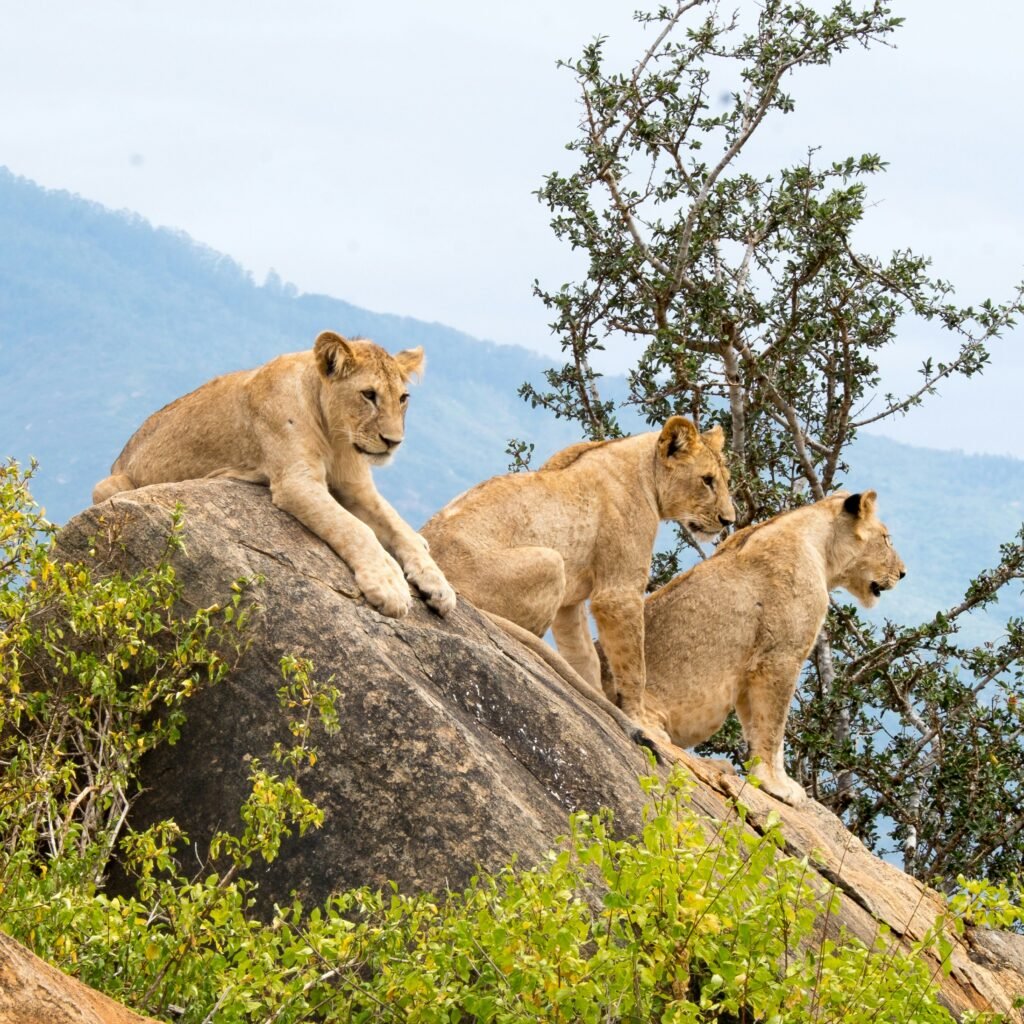As you get ready for your trip to the Maasai Mara, excitement and wonder fill you. Close your eyes and picture the vast savannahs, the rustling grass, and the calls of wildlife. It’s not just the landscapes; it’s the journey in Africa’s iconic wildlife reserve. Welcome to the Maasai Mara National Reserve—a crown jewel of Kenya and a wildlife haven that promises awe-inspiring moments at every turn.
Whether it’s witnessing the Great Migration, encountering the Big Five, or immersing yourself in the rich traditions of the Maasai people, every step in the Maasai Mara is a journey into nature’s raw beauty and cultural depth.
This comprehensive Maasai Mara Travel guide will help you plan your perfect trip, ensuring you savor every moment and take home unforgettable memories.

Key Takeaways
- Experience breathtaking landscapes and abundant wildlife in the Maasai Mara.
- Learn essential Kenya travel tips to enhance your journey through the reserve.
- Discover the Big Five and other iconic species during your safari.
- Engage with the local Maasai culture for a richer experience.
- Plan ahead to make the most of your visit to this extraordinary part of Kenya.
Introduction to the Maasai Mara
The Maasai Mara is a gem in Africa, known for its stunning views and diverse wildlife. It covers over 1,500 square kilometres in southwestern Kenya. It shares a border with Tanzania’s Serengeti National Park, making it a vast wildlife home.
When you go on a Maasai Mara safari, you dive into nature’s heart. You see how life changes and grows here.
The Maasai Mara is famous for its wildlife. You’ll see elephants, giraffes, lions, and leopards. Each safari shows the rich life of this untouched place.
The Maasai people add to the area’s charm. They have their own customs and clothes. Meeting them lets you learn about their rich history.
Connecting with the Maasai community makes your trip better. It also helps keep their traditions alive in this beautiful wildlife area.
Best Time to Visit the Maasai Mara
The Maasai Mara is a stunning place for those who love adventure and wildlife. Knowing when to visit is key to enjoying its beauty and wildlife. The best time is from July to October, when the Maasai Mara migration happens. Millions of wildebeest and zebras move across the plains, attracting visitors worldwide.
The dry season, from June to October, is great for seeing animals. They gather around water, making it easy to spot different species. If you prefer fewer people, April-May and November are quieter months with lower prices.
Here’s a quick guide to the seasons in the Maasai Mara:
| Month | Weather | Wildlife Viewing | Highlights |
|---|---|---|---|
| January | Warm and dry | Good | Great for bird watching |
| February | Warm and dry | Good | Calving season for wildebeest |
| March | Warm and slightly wet | Fair | Wildflowers bloom |
| April | Wet and cool | Fair | Fewer tourists |
| May | Wet | Fair | Green landscapes |
| June | Warm and dry | Good | Start of migration |
| July | Warm and dry | Excellent | Peak of the migration |
| August | Warm and dry | Excellent | Predators in action |
| September | Warm and dry | Excellent | Migration continues |
| October | Warm and dry | Good | Migration concludes |
| November | Cool and wet | Fair | Fewer tourists |
| December | Warm and wet | Fair | Christmas celebrations |
Choosing the right time to visit the Maasai Mara makes your wildlife adventure even better. The Maasai Mara migration is a highlight, especially if you’re there during the key months. Each season has its own beauty, so plan your visit to make the most of your trip.
Getting to the Maasai Mara
Reaching the Maasai Mara is an adventure in itself, and there are two main ways to travel: by road or by air.
By Road
- Duration: 5–6 hours from Nairobi.
- What to Expect: Scenic drives through Kenya’s picturesque countryside, with glimpses of rural life.
- Tips:
- Start early to avoid Nairobi traffic.
- Carry snacks and water for the journey.
- Check weather conditions, as roads may become muddy during the rainy season.
By Air
- Duration: 45 minutes from Nairobi to airstrips within the Maasai Mara.
- Advantages: Quicker and more convenient, allowing you to maximize time in the reserve.
- Tips:
- Book flights early, especially during peak migration months.
- Check baggage restrictions for small aircraft.
Whether you choose the scenic road trip or the convenience of flying, the journey to the Maasai Mara sets the tone for your safari adventure.
Maasai Mara Safari Options
The Maasai Mara offers many safari experiences. You can choose from exciting game drives, peaceful walking safaris, or unique hot air balloon rides. Each option lets you get up close to the amazing wildlife of this famous area.
Types of Safaris Available
From heart-pounding game drives to serene hot air balloon rides, the Maasai Mara offers a variety of activities for every kind of traveler.
- Game Drives
- Explore the savannahs in open vehicles for up-close encounters with wildlife.
- Hot Air Balloon Safaris
- Float above the plains at sunrise for a bird’s-eye view of the Mara.
- Walking Safaris
- Step into the wild with experienced guides who’ll teach you about the ecosystem.
- Cultural Tours
- Visit Maasai villages to learn about their traditions and crafts.
Guided vs Self-Drive Safaris
Deciding between a guided or self-drive safari depends on what you prefer. Guided safaris offer the knowledge of experienced rangers. They make your trip more meaningful by sharing their insights.
Self-drive safaris give you freedom. You can choose your path and make stops whenever you want. But, you need to know the park’s rules and how to navigate. Think about what suits your travel style best.

Maasai Mara Wildlife
The Maasai Mara is a treasure trove of diverse wildlife. It offers visitors an unforgettable experience. Those keen on observing the renowned Big Five are in for a treat. The park boasts a stunning array of species, ensuring that every safari is unique and exhilarating.
Iconic Species to Look Out For
Throughout your adventure in the Maasai Mara, you will have the chance to encounter numerous iconic animals beyond the Big Five. Among these, the African lion, known for its majestic presence, often reigns as the star of the show. Other notable wildlife includes:
- Cheetahs
- Leopards
- Elephants
- Rhinoceroses
- African buffaloes
- Hippos
- Giraffes
- Various antelope species
The Big Five: What You Need to Know
When discussing the Maasai Mara wildlife, the Big Five stands out for good reason. This term refers to the five most iconic animals that every wildlife enthusiast aspires to spot. These are:
| Animal | Notable Features | Best Viewing Times |
|---|---|---|
| African Lion | Majestic predators often seen in prides. | Early morning or late afternoon. |
| Elephant | The largest land animals, known for their intelligence. | All day, particularly near water sources. |
| Leopard | Solitary hunters known for their stealth. | Dawn or dusk. |
| Rhinoceros | Endangered species known for their size and strength. | Early morning or late afternoon. |
| African Buffalo | Massive herds often spotted in grasslands. | Morning and evening. |
Embarking on a journey through the Maasai Mara, you will not only witness the majestic African lion and the rest of the Big Five. You will also explore a multitude of captivating wildlife that thrives in this remarkable ecosystem.
Understanding the Great Migration
The Great Migration is a stunning sight, with millions of wildebeest and zebras moving between the Serengeti and the Maasai Mara. It’s a time of survival and battle against predators, drawing in wildlife lovers and photographers. Knowing about this event makes any trip to the Maasai Mara even more exciting.
What is the Great Migration?
The Great Migration is when herbivores move to find new food. It includes calving seasons and the thrilling river crossings, where predators wait. Seeing this raw nature shows the beauty and harshness of survival. It’s a journey that highlights life and death, showing the unique ecosystem of the Maasai Mara.
Timing Your Visit for the Migration
To really see the Maasai Mara migration, timing is key. The migration happens in stages, offering the best views:
- January to March: Calving season happens in the southern Serengeti, drawing predators.
- April to June: The herds start moving north to the Maasai Mara, growing in numbers.
- July to September: This is the best time for river crossings, with herds risking danger to reach the Maasai Mara.
- October to December: The herds head back to the Serengeti for fresh grass, ending the migration.

Maasai Mara Accommodation
Planning your trip to the Maasai Mara? Picking the right place to stay is key for a great experience. There’s something for every budget and taste, making sure you find your ideal spot. Let’s look at the different types of places you can stay in the Maasai Mara.
Luxury Lodges and Tented Camps
Looking for luxury in the wild? Luxury lodges offer a top-notch retreat. They come with fine dining, spas, and lots of extras for your comfort. Enjoy private game drives with expert guides to make your wildlife adventure even better.
Places like Mara Serena Safari Lodge and Governor’s Camp are known for their great service and beautiful spots.
Budget-Friendly Options
On a tight budget? The Maasai Mara has many affordable choices without sacrificing the experience. Tented camps give a rustic, real feel with shared facilities. Mara River Lodge and Oloololo Gate Camps are great for saving money while enjoying nature’s beauty.
| Type of Accommodation | Features | Prices (per night) |
|---|---|---|
| Luxury Lodges | All-inclusive, spas, private game drives | $500 – $5000 |
| Tented Camps | Rustic experience, shared facilities | $150 – $1000 |
Choosing the right place to stay in the Maasai Mara makes your safari adventure unforgettable. Whether you pick luxury or something more affordable, your stay will be memorable.
Essential Kenya Travel Tips
Planning a trip to Kenya? A few key tips can make your journey better, especially in the Maasai Mara. Knowing your visa needs is vital for a smooth entry. Make sure you have your passport and any visas you need well in advance.
Vaccinations are important for your trip. Talk to your doctor about shots for common diseases. This will help you enjoy Kenya’s beautiful landscapes without worry.

Handling money can be tricky. Knowing the Kenyan Shilling (KES) and where to find ATMs helps with spending. Also, tell your bank you’re travelling to avoid any issues.
Respecting local customs is key. Learning some Swahili phrases can help you connect with people. Tipping is common, especially in tourism. It shows you value their service.
Visiting the Maasai Mara is more special when you understand its culture. Learning about the Maasai people adds depth to your adventure.
Don’t forget essentials like sunscreen, insect repellent, and a water bottle. Being prepared lets you enjoy your trip more. With these tips, your Maasai Mara adventure will be unforgettable.
What to Pack for Your Trip
Planning is key when packing for Maasai Mara. You want to be comfortable and ready for the weather changes. Start with light, breathable clothes in neutral colours. This keeps you cool and helps you blend in with nature.
Here are the essentials you’ll need:
- Binoculars: A good pair can enhance your wildlife viewing experience.
- Camera: Capture the breathtaking landscapes and magnificent animals.
- Sunblock: Protect your skin from the strong sun during the day.
- Insect repellent: Keep those pesky mosquitoes and bugs at bay.
- Sturdy walking shoes: Comfortable footwear is critical for safari drives and walking excursions.
Evenings can get chilly, so layering is key. Bring a lightweight jacket or fleece for warmth under the stars. Here’s a detailed list of what to pack for Kenya:
| Item | Purpose |
|---|---|
| Light, breathable clothing | Comfort during daytime activities |
| Binoculars | Wildlife viewing |
| Camera | Capturing memories |
| Sunblock | Skin protection |
| Insect repellent | Prevent bug bites |
| Lightweight jacket | Warmth for cooler evenings |
| Sturdy walking shoes | Support for walking and hiking |
With careful planning and this guide, you’ll be set for an amazing time in Maasai Mara.
Health and Safety Considerations
When you visit Maasai Mara, keeping safe is key. Make sure you have the right vaccinations before you go. You might need shots for hepatitis A, typhoid, and malaria to stay safe.
It’s also important to have clean drinking water. You can bring a water filter or buy bottled water from trusted sources. This helps keep you healthy while exploring.

Seeing wildlife is a big part of Maasai Mara. It’s important to know how to stay safe around animals. Listen to your guides and follow their advice. They know how to keep you safe while you enjoy the amazing views.
Medical help might be hard to find, so know where the nearest clinics are. Pack a small first aid kit with essentials and any medicines you need. Being prepared makes your trip safer and more enjoyable.
- Carry a comprehensive travel insurance policy covering medical emergencies.
- Stay informed about local health advisories or disease outbreaks.
- Practice safe food and water consumption to avoid illness.
Following these tips will keep you safe and comfortable in Maasai Mara. Get ready for an amazing adventure!
Local Culture and Maasai People
The Maasai people are known for their boldness and rich traditions. They live in harmony with the land they call home. You can dive into their culture through fun activities that show their daily life.
By talking to the Maasai, you gain special insights. You learn about their language, crafts, and customs. It’s a unique way to see their world.
Visiting traditional villages is a highlight. You can watch and join in their ancient practices. The Maasai dances are a must-see, telling their history and uniting the community.
These dances are not just for fun. They show the Maasai’s deep connection to their heritage. It’s a way to appreciate their culture more.
For a deeper dive, try Maasai beadwork or storytelling. These activities let you connect with the community. They make your trip to the Maasai Mara even more special.
Maasai Mara Tours and Experiences
In the Maasai Mara, your adventures go beyond just game drives. You can enjoy unique experiences that connect you deeply with this beautiful landscape.
Hot Air Balloon Rides
See the Maasai Mara from above with hot air balloon rides at dawn. As you rise, you’ll see stunning views of the savannah. Wildlife roams freely below, adding to the magic.
The calm atmosphere lets you feel the wonder as the sun lights up the plains. After landing, a champagne breakfast awaits. It makes this experience truly unforgettable.
Guided Nature Walks
Join guided nature walks for a closer look at the flora and fauna. Skilled guides lead you, sharing their knowledge. You’ll see details often missed on a drive.
This approach adds a personal touch to your Maasai Mara tours. It helps you appreciate its beauty even more.
Photography Tips for the Maasai Mara
The Maasai Mara is a dream for photographers, with its stunning landscapes and wildlife. To get the most out of your photos, remember these tips:
- Understand Lighting: The right light can make your photos pop. Early mornings and late afternoons offer soft, golden light. It’s perfect for capturing vibrant scenes.
- Observe Animal Behaviour: Spend time learning about the animals’ habits. This helps you guess their next move. You’ll catch those special moments, like a lion’s leap or a cheetah’s sprint.
- Composition Techniques: Use the rule of thirds for balanced images. Place your subject off-centre for a dynamic look. Look for leading lines to guide the viewer’s eye.
- Right Gear: Bring a telephoto lens to get close without disturbing the animals. A sturdy tripod is key for sharp photos, especially in low light.
- Protect Your Equipment: Dust and moisture can be a problem. Use covers for your camera gear to protect it from the weather.
By following these tips, you’ll improve your wildlife photography in the Maasai Mara. You’ll capture the unforgettable moments of your safari.
Traveling Responsibly in the Maasai Mara
Exploring the Maasai Mara’s stunning landscapes means we must travel responsibly. By choosing sustainable tourism, we help protect the environment and support local communities. Our actions can positively impact wildlife and cultural heritage, making our visit more meaningful.
Respecting local customs and wildlife is key in the Maasai Mara. When in the national park, follow the rules to reduce our impact. Keep a safe distance from animals, don’t litter, and be quiet. These steps help preserve the area’s natural balance.
Connecting with local communities shows our dedication to sustainable tourism. Support local businesses by buying crafts, attending cultural events, or joining community projects. This helps the Maasai people and enriches our travel experience with authentic cultural insights.

Responsible travel in the Maasai Mara is about making thoughtful choices. Simple actions can make a big difference, leading to a more sustainable future. Our visits should leave a lasting positive impact, ensuring the Maasai Mara’s beauty is enjoyed for years to come.
The Maasai Mara is more than a place; it’s a doorway to Kenya’s beauty and culture. Your trip here will show you stunning views and unforgettable wildlife. This guide helps you make the most of your Kenyan adventure.
Here, you’ll see the Big Five and learn about the Maasai people’s traditions. Every moment is an opportunity to explore. By connecting with locals, you support the environment and its people.
So, get ready to see amazing sunrises, wildlife, and people. The Maasai Mara is waiting to give you memories that will last forever. It will leave a special mark on your heart.
When is the best time to visit the Maasai Mara for the Great Migration?
What types of wildlife can I expect to see during my Maasai Mara safari?
On your Maasai Mara safari, you’ll see the Big Five: lions, elephants, leopards, rhinos, and buffaloes. You’ll also see cheetahs, hippos, giraffes, and many antelope species.
How do I get to the Maasai Mara from Nairobi?
Getting to the Maasai Mara from Nairobi is easy. You can drive for 5-6 hours or fly, with many flights to the reserve’s airstrips.
What accommodation options are available in the Maasai Mara?
The Maasai Mara offers many places to stay. You can choose from luxury lodges with all-inclusive services or budget-friendly tented camps for a more rustic stay.
What should I pack for my trip to the Maasai Mara?
Pack light, breathable clothes in neutral colours. Bring a good camera, binoculars, sunblock, insect repellent, and sturdy shoes. Don’t forget layers for cooler evenings.
Are there any health and safety considerations I should be aware of?
Yes, check vaccinations and malaria prophylaxis before you go. Only drink safe water. Understand local wildlife and behave appropriately during encounters.
How can I engage with the local Maasai culture during my visit?
Visit local villages, join traditional dances, and learn about their customs and crafts. This will give you a deeper understanding of their heritage.
What are the unique experiences I can enjoy in the Maasai Mara?
Enjoy game drives, hot air balloon rides for aerial views, and guided walks to learn about local flora and fauna.
What photography tips can you provide for capturing Maasai Mara wildlife?
Understand lighting and animal behaviour. Bring a telephoto lens and protect your gear from dust and moisture. This will help you capture stunning images.
How can I travel responsibly in the Maasai Mara?
Respect local customs and wildlife by following park rules and avoiding animal disturbance. Use resources wisely to help conserve this amazing environment.


















